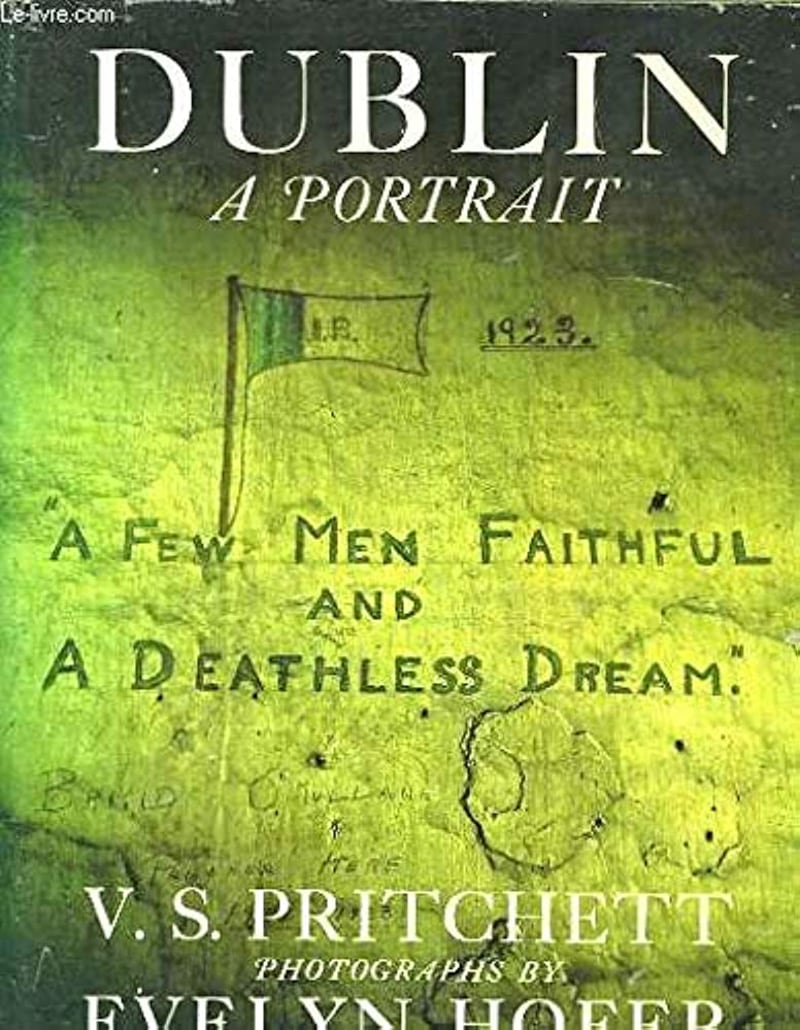The oldest Irish library in America – that is, the oldest library dedicated to books of Irish interest – is said to be in San Francisco. Opened in 1975 and going on to inspire Irish communities all over the United States to set up similar book collections, the Patrick J Donohue library in the city’s United Irish Cultural Centre is stuffed with books and artefacts. It’s quirky in the best way. On the weekend I visited last year, one corner of this tiny temple to Irish words was incongruously occupied by a life-sized mannequin dressed up as a member of An Garda Síochána.
On one wall a Rebel Cork Ladies Association pendant hung proudly, and in a glass case I spotted a programme from the 33rd annual picnic of the Knights of the Red Branch, a local Irish brotherhood, from 1902. The programme listed the various races and prizes. The picnic was an inclusive affair: there was a race for Young Ladies. And one for Married Ladies. There were races for Fat Ladies and Fat Men. (First prize for the Fat Ladies was a five-pound box of tea. Second prize a sack of flour. The winning Fat Men could expect to win a keg of lager or a box of cigars.)
The Donohue library was having a book sale and the shelves outside heaved with bargains. I picked up Down All The Days by Christy Brown and an interesting-looking book about Dublin. It is months since that trip. I’ve only now got around to reading Dublin: A Portrait by VS Pritchett, with photographs by Evelyn Hofer. It’s a large coffee table-style hardback with arresting portraits of our capital city and its people. Mary Lavin. Patrick Kavanagh. The death mask of James Joyce. That famous photo Girl with Bicycle, in the Coombe. The stucco ceiling of the orphanage on Dominick Street contrasting with the lumpy beds beneath. A deserted College Green looking grand and gorgeous. Hofer’s eye was exquisite. She missed nothing.
An English novelist and journalist, Pritchett first came to Dublin as a very young man on a visit in 1923 to report for the Christian Science Monitor on the Civil War. “Dublin was then, and still is, a city where very fat, black-haired, red-faced men abound, men as soft and plump as tenors in training. This is said to be due to a diet of Guinness and Dublin’s excellent bread,” he reported.
READ MORE
When he first visited, Pritchett wrote that Dublin mainly stank of horse manure. He was surprised to find a temperance (or alcohol-free) hotel on Harcourt Street. He went to the Abbey Theatre, which was almost empty. He reports that it was “cold, draughty and shabby”. It smelled of horses and the Liffey. “People said the smell came from the morgue on the site of which the theatre was built”.

The writer enjoyed some great literary adventures, hobnobbing with AE and Yeats. He went to visit Sean O’Casey in his tenement “slum room” on the North Circular Road, where a single oil lamp burned and a note was pinned to the wall: “Get On With the Bloody Play”. O’Casey was writing The Plough and the Stars at the time. Pritchett wrote: “Like all Dublin writers he was caught up in the perpetual Dublin jealousies and quarrels, for success is not easily forgiven … the Irish writer works best in his own country, but his countrymen are his worst enemies and he can only succeed outside it, either in England or America.” There is a great moment where Pritchett is walking to the Dáil with WB Yeats, a senator then, and the poet stops to shake a stone out of his shoe.
I wondered what he’d make of the town, the cluttered street furniture around College Green, the housing crisis, the price of a chicken wrap
Above all, Pritchett was interested in Ireland’s tumultuous relationship with England. By the end of the book, having returned in the 1960s, he decreed that “apart from Partition, the quarrel is over. Or as near as it ever will be”. The Troubles would erupt a year after the book’s publication in 1967. The book’s price: four pounds and four shillings.
[ The Irish Times view on building sustainable cities: a lack of visionOpens in new window ]
Pritchett, known as VSP, died in 1997, aged 96. Reading his appraisal of the city, I wished we could bring him back to the Dublin of today. I wondered what he’d make of the town, the cluttered street furniture around College Green, the housing crisis, the price of a chicken wrap, the doughnut emporiums, the vaping shops. There’d be lots to tell him. For one thing, O’Connell Street was “in ruins” when he first visited, and a hundred years later it’s fair to say the street is still waiting to be restored to her former magnificence.
He’d be glad to see The Abbey, warm and comfortable, is packed most nights of the week, although our only temperance bar, The Virgin Mary, just closed down. (Harcourt Street, meanwhile, is hopping.) Neither O’Casey or Pritchett would recognise the mutually supportive environment of rave blurbs and endorsements passed from scribe to fellow scribe these days.
When he returned 40 years after his first visit, he slagged off the newly erected Liberty Hall
I grew fonder and fonder of Pritchett while reading his sublime observations of Dublin and her characters. I’d like to take him for a pint and tell him that the city only smells of horse poo the very odd time now around St Stephen’s Green. Modern Dublin smells mostly of marijuana, VSP old chap, I’d explain, not manure.
Pritchett had a clear passion for the city, an understanding of what made it special and also what held it back as a place. When he returned 40 years after his first visit, he slagged off the newly erected Liberty Hall and also noted how “vandals have sliced down one side of a fine Georgian Street at the corner of Merrion Square”. He bemoaned the destruction of the city, correctly surmising that one of the “ghastly” threats to Dublin was “speculating builders and car-parking barbarians”.
[ My family and the Civil War: ‘It was barely spoken about growing up’Opens in new window ]
He also wrote some cautionary, regretful words back then that could sit as easily in a book about Dublin today: “Sites rise in value, rents go up; why not pull down and acquire what we all dream of nowadays: capital.”













